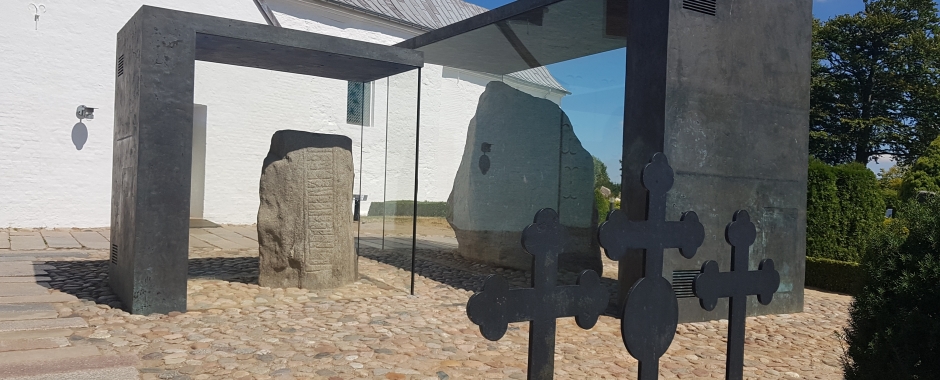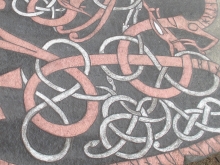
Vikings are "Pirates" in old English language. The Viking Age (793–1066 AD) in Scandinavian history started when the Norsemen explored, raided, conquested and established colonization in Europe throughout the Baltic sea and other coastal areas where they could reach by ships:
The Norsemen are a North Germanic tribe who spoke the Old Norse language of overseas settlements in Scandinavia between the 9th to the 13th century. The Runes or runic inscriptions were used in spoken and written form and were replaced by Latin Alphabet later. However, the usage of runic inscriptions on runic calendar lasted until the 19th Century and for decorative purposes on the tombstones. The runestones are mostly scattered in Scandinavian archipelago, especially in Sweden.
The important historical runestones, the two Jelling stones were found in Jelling town, Denmark. Nearby a grave was found in a church which may be the resting Place of King Gorm (who is mentioned on both Runestones) the old. When the church was refurbished, a silver white mark was put on the floor where the grave was located:
According to the fresco walls of the building, the Jelling church is dated around 1125 :
The Jelling church is the burial site of the Danish King, "Gorm the old":
The small and older Jelling stone from the 10th century was raised by King Gorm the Old in memory of his wife, Thyra:
At the back side of the older runestone, some cracks are clearly shown on this stone:
The large runestone was raised by the King Harald Bluetooth in memory of his parents:
The runic inscriptions were replaced to Latin Alphabet after the conversion to Christianity. The son of the King Gorm the old called "Gormsson" is the King of Denmark and Norway, his name is Harald Bluetooth. He was the one who conquered Denmark and Norway. The translation of the large runic inscriptions from the slideshow in the museum describes the story of this stone:
and his victory in Denmark and Norway:
This included his success to convert the Danes (North Germanic tribe in Southern Scandinavian) to Christianity:
From this perspective view, it may look like what the slideshow explained:
A speculation that the stone is supposed to be read like a book or bible:
Each runestone has a unique shape with the runic inscription that is a type of Germanic linguistics that raised the interest of people around the world to visit these stones:
Both stones are installed in the glass cases since 2012 for the weather protection and it became one of UNESCO World Heritage sites:
The surroundings of this burial site are quite peaceful as long as there are not crowed with the visitors.
Keep the faith!










